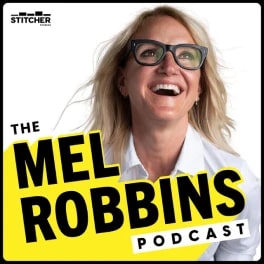

This article is an excerpt from the Shortform guide to "The Mel Robbins Podcast". Shortform has the world's best summaries and analyses of books, podcasts, and more.
Like this article? Sign up for a free trial here.
Why should you reduce your breathing rate? What’s the top Patrick McKeown breathing exercise?
According to Patrick McKeown, breathing is for much more than just survival. Improper breathing can disrupt your day-to-day life, even disrupting your sleep and overall health.
Let’s see why McKeown is adamant about proper breathing, as discussed on The Mel Robbins Podcast.
Importance of Reduced Breathing Rates
Patrick McKeown highlights that a conventional calm nose breathing rate ranges from 10 to 14 breaths per minute.
For relaxation, a reduced breathing rate of 4 to 6 breaths per minute can be used. He urges listeners to concentrate not just on the count but also on the volume of the breath. This significantly influences oxygen distribution in the body.
Patrick McKeown’s Breathing Exercises
Changing from mouth to nose breathing is one of Patrick McKeown’s breathing exercises. To facilitate this transition, he suggests the use of special tape to keep the mouth closed during sleep, thus promoting unconscious nose breathing.
Further, McKeown proposes that a slower pace of nose-breathing be integrated into day-to-day life. This step is needed in maintaining proper sleep hygiene and practicing gentle, slow breaths before bedtime. Utilizing these techniques can stimulate the vagus nerve, reduce the heart rate, and help prepare the body for rest.
Effective use of the diaphragm can further assist individuals battling OSA.
Context
Breathing is a fundamental aspect of our existence, but its importance goes beyond mere survival. Understanding the significance of conscious breathing and adopting specific techniques can have profound benefits for our overall health and well-being. One such technique gaining attention is nasal breathing, which involves inhaling and exhaling through the nose rather than the mouth. Nasal breathing offers advantages over mouth breathing, including improved oxygen distribution in the body and enhanced filtration of air pollutants. By reducing breathing rates and paying attention to breath volume, individuals can optimize their respiratory function and promote relaxation.
The theme underlying this topic revolves around the power of conscious breathing to positively impact general health. It emphasizes the need to be intentional about our breaths, focusing on their effects on both body and mind. This concept aligns with other practices that promote mindfulness, stress reduction, and overall well-being such as meditation, yoga, and deep breathing exercises. By incorporating specific breathing techniques into daily routines, individuals can experience long-term benefits for their physical health as well as mental clarity.
While there is no specific historical context necessary to understand this topic as it focuses on techniques developed by McKeown in recent times, there is potential for future advancements in this field. Further scientific research may shed light on the precise mechanisms behind these techniques’ benefits while exploring their applications in various domains like sports performance or mental health support.

———End of Preview———
Like what you just read? Read the rest of the world's best guides to The Mel Robbins Podcast" at Shortform.
Here's what you'll find in our full The Mel Robbins Podcast episode summaries:
- Advice to make your life and your personal relationships better
- How to boost your confidence with techniques recommended by experts
- Research-based lessons combined with personal stories






